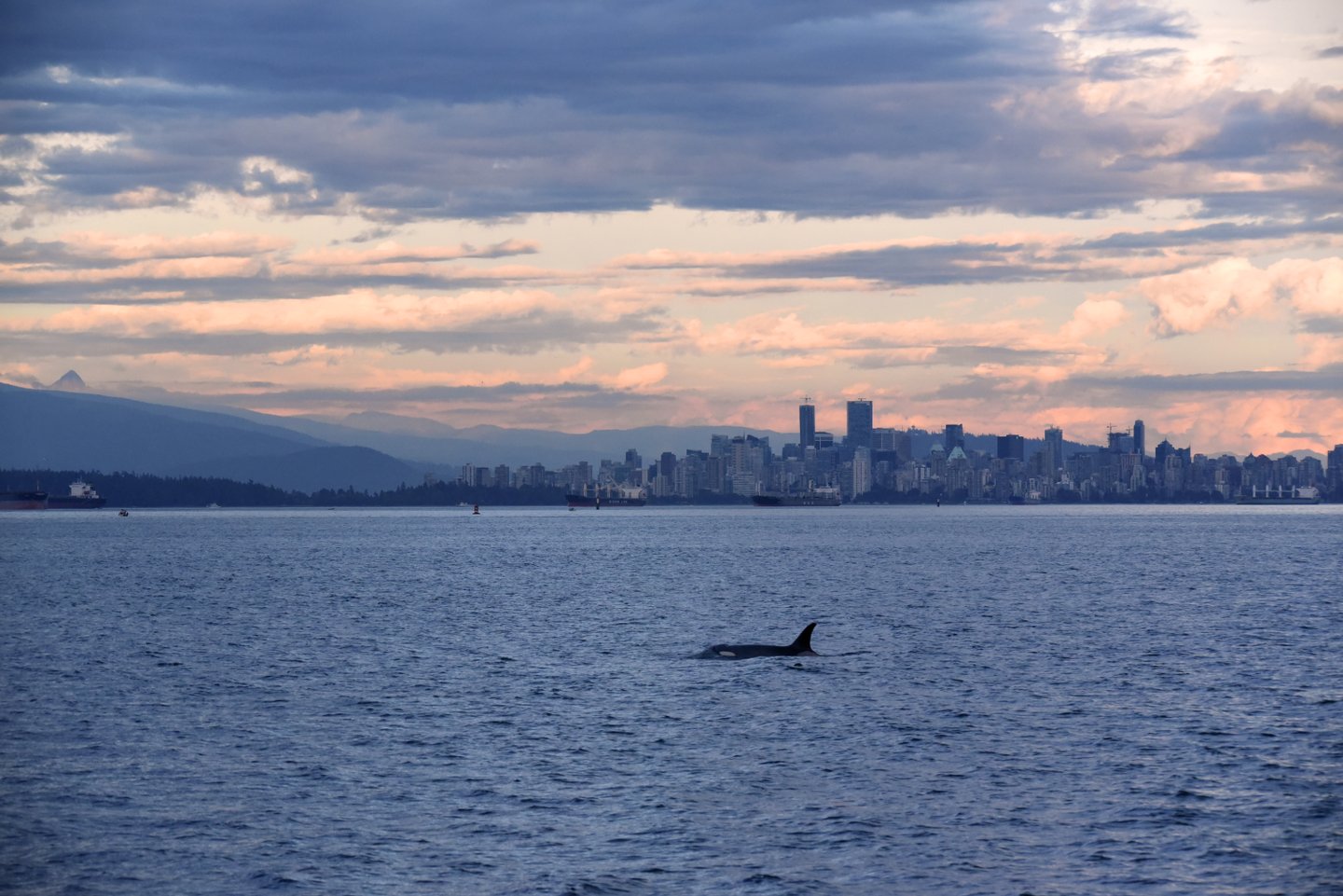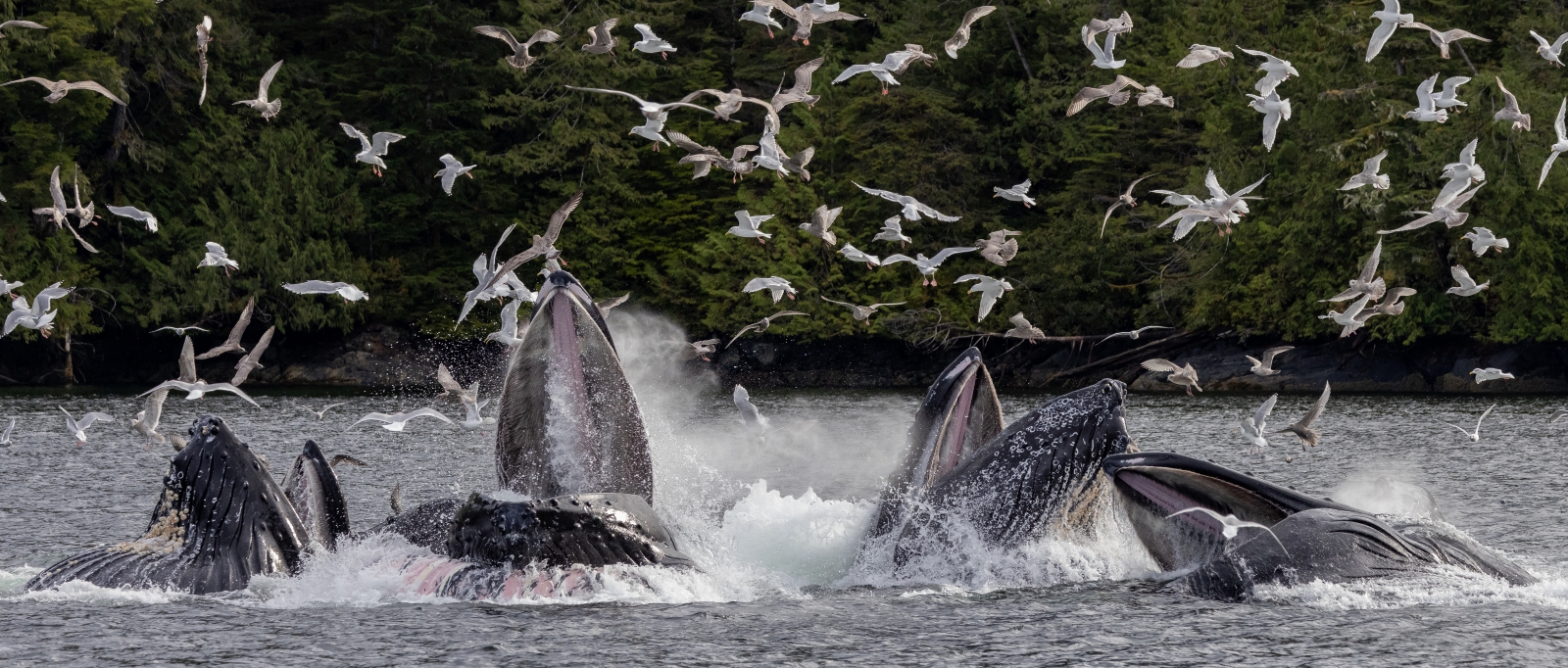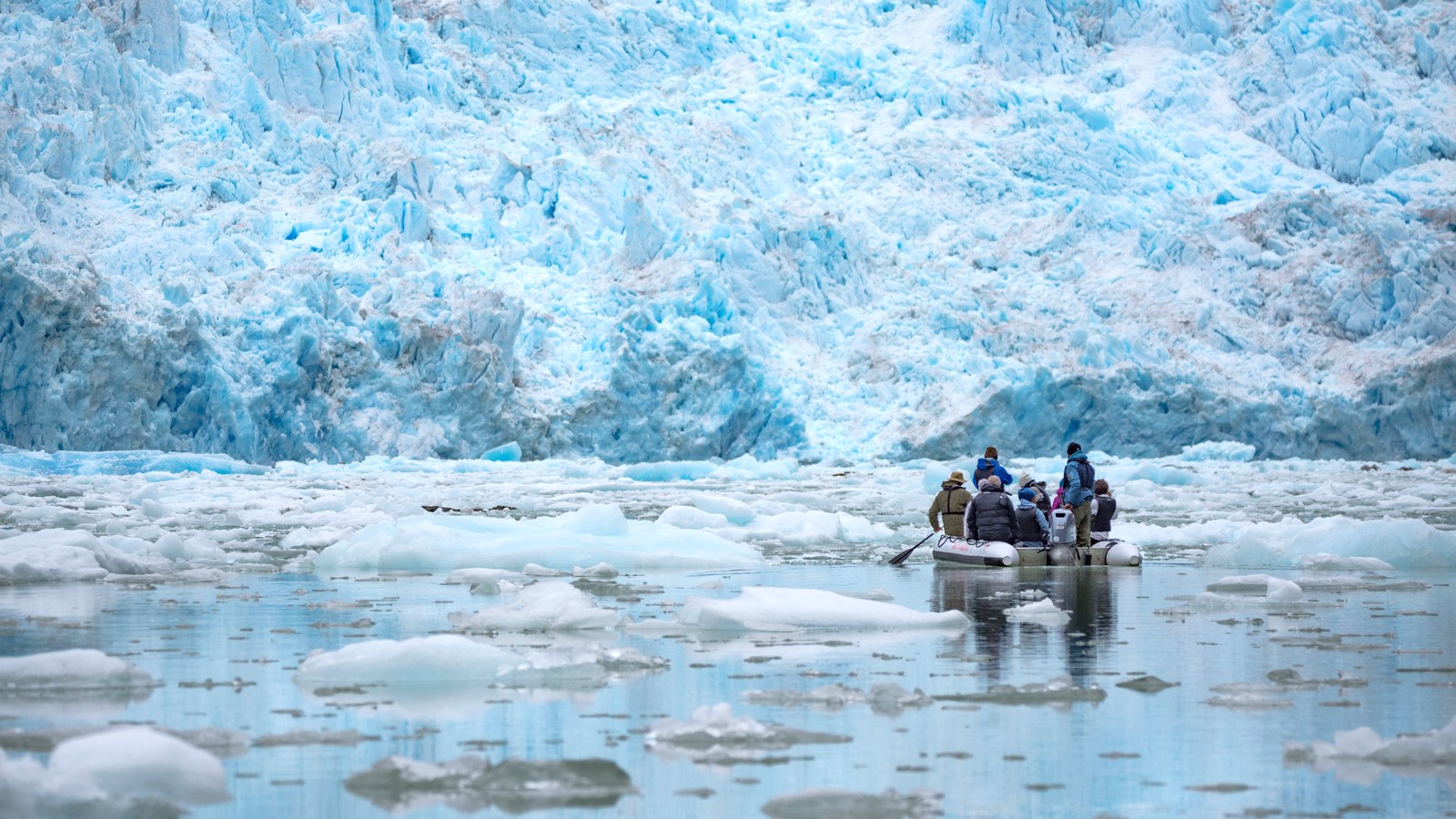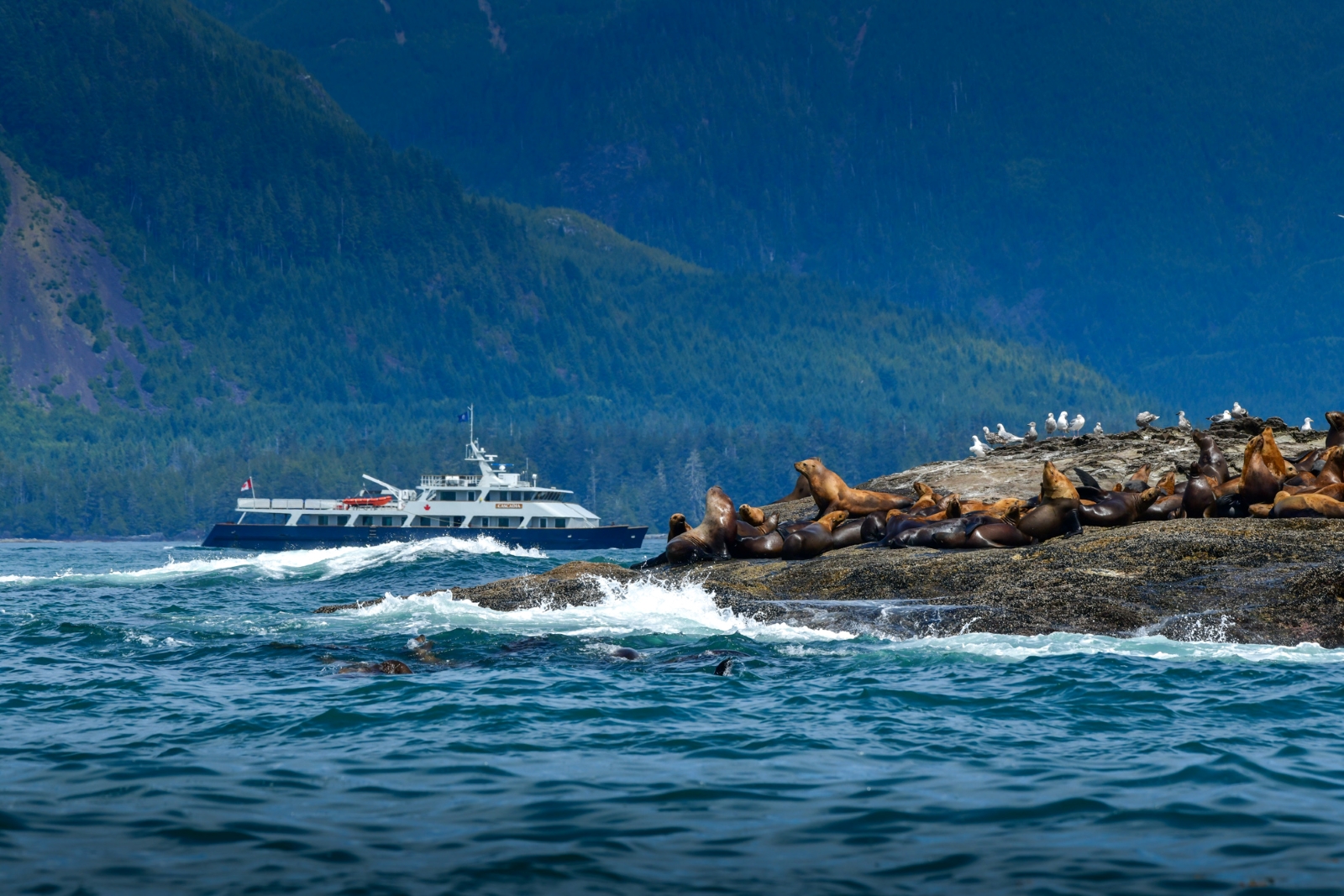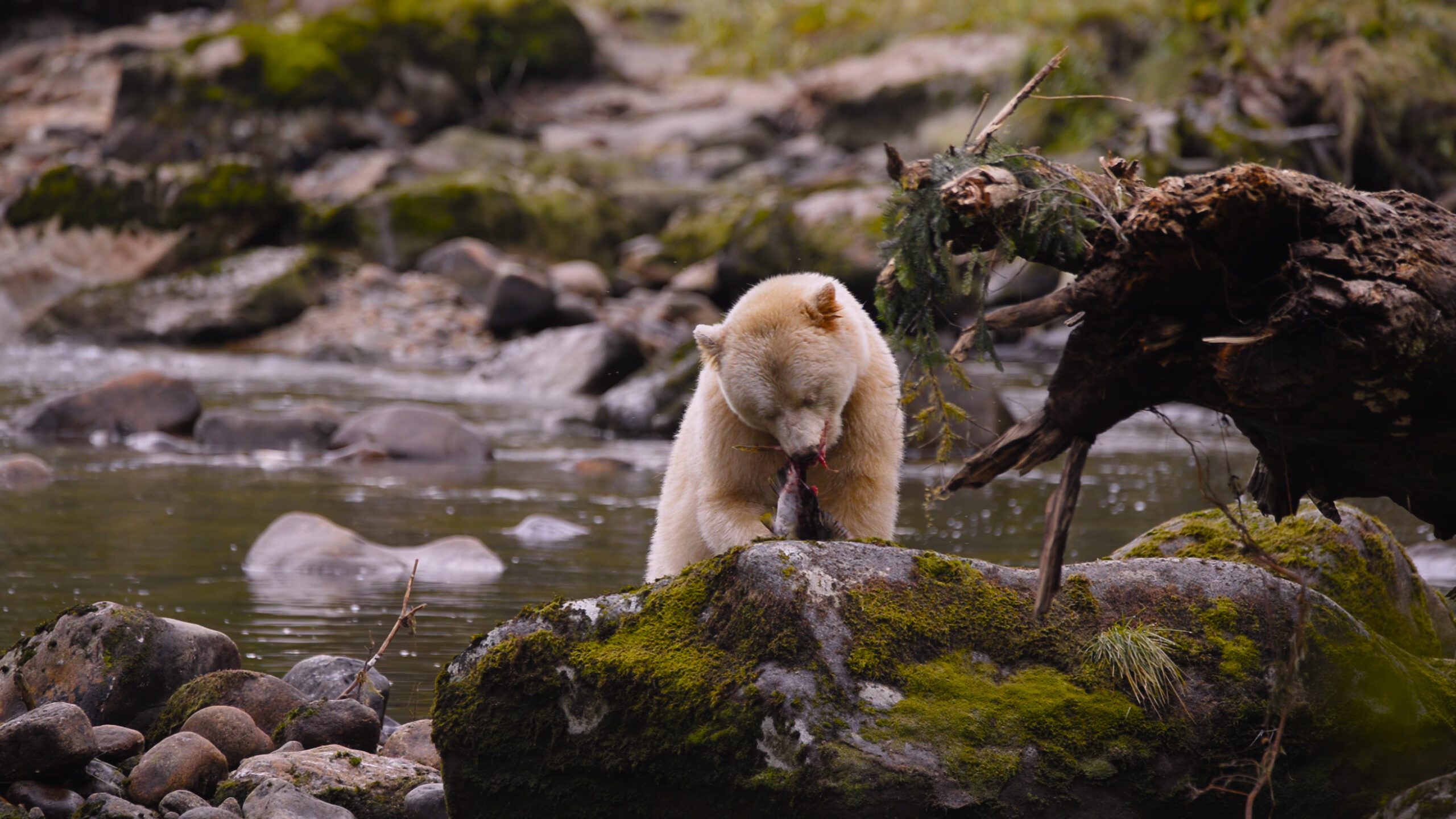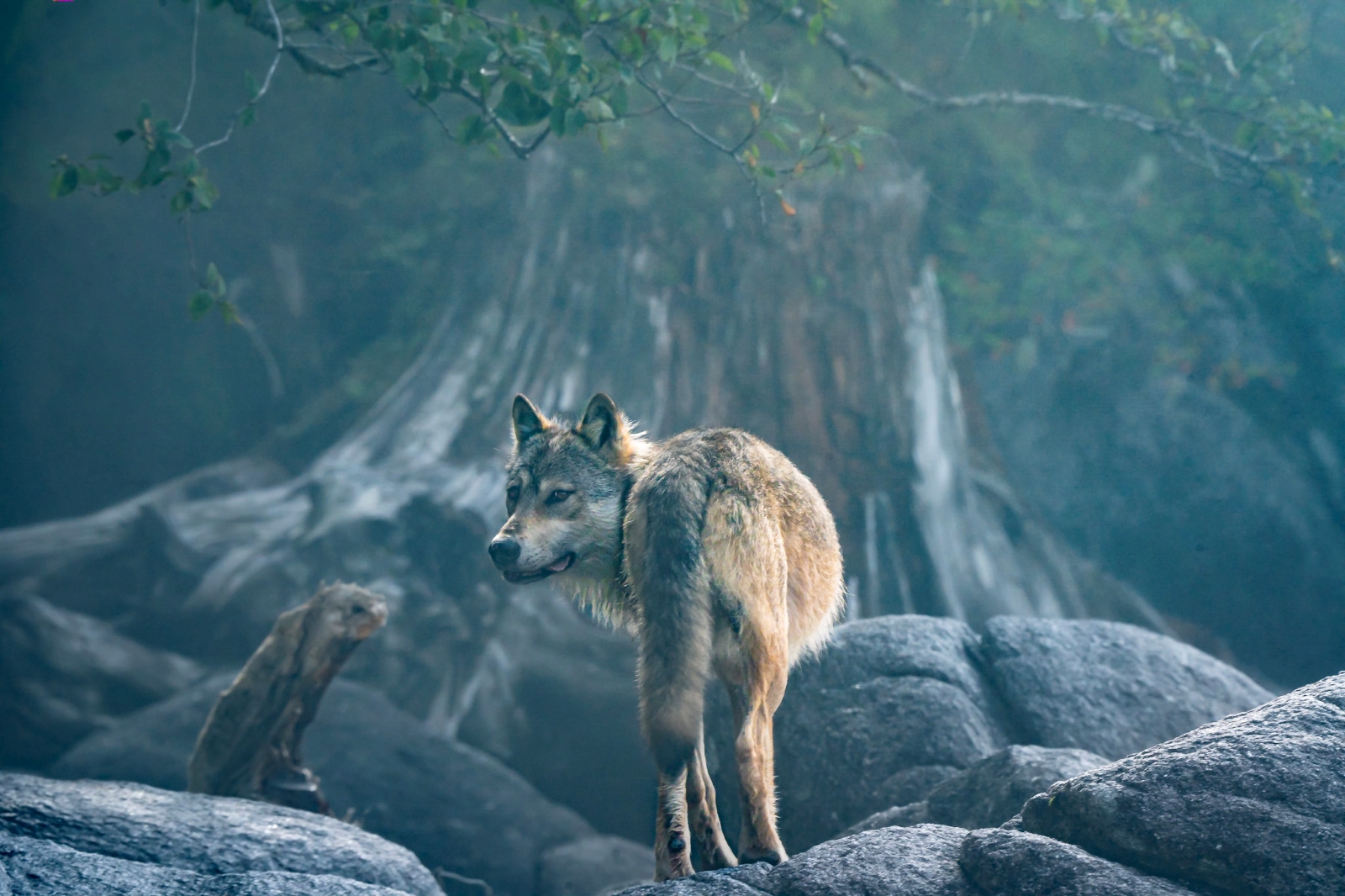If you’re in Vancouver, you’re already on the doorstep of one of the world’s most ecologically rich whale habitats. The surrounding waters of the Salish Sea serve as vital feeding and transit zones for Bigg’s (transient) orcas, humpback whales, gray whales, and harbour porpoises—all drawn by a complex interplay of currents, prey availability, and seasonal migrations.
Further north, British Columbia’s maze of fjords, channels, and remote inlets—including the Great Bear Rainforest and Broughton Archipelago—hosts one of the most dynamic coastal ecosystems on the planet. These regions support not only whales but also the marine food web that sustains them: herring spawns, salmon runs, bait balls of krill, and glassy fjord waters that carry the nutrients inland.
So, whether you’re looking for a quick day trips or a multi-day safari on water, here are some of the ways to go about seeing whales from Vancouver:
Half-Day Whale Watching Tours from Vancouver
Photo: Destination Vancouver/Prince of Whales Whale Watching
Vancouver is one of the few places on Earth where (if you’re lucky) you can spot killer whales within sight of a major city. Bigg’s (transient) orcas, which hunt seals and sea lions, travel through these urban-adjacent waters year-round.
For travellers on a tight schedule, half-day tours departing from Vancouver’s Granville Island and Steveston Village (Richmond) offer quick access to the wildlife-rich waters of the Salish Sea.
From May through September, your chances are highest of seeing Bigg’s (transient) orcas—marine mammal hunters that travel in small, stealthy groups—and humpback whales, which have made a remarkable comeback in this region over the past two decades after being extirpated by industrial whaling.
You may also encounter harbour seals, Steller sea lions, and the occasional gray whale during their long migration between Mexico’s lagoons and Arctic feeding grounds.
Popular Operators
- Prince of Whales (Granville Island): Depart right from False Creek, a short distance from downtown Vancouver, and pair your tour with a visit to Granville Public Market.
- Wild Whales Vancouver (Granville Island): Offers small group tours with passionate naturalists.
- Vancouver Whale Watch (Steveston Village): One of the longest-standing operators near the city.
- Seabreeze Adventures (Steveston Village): Zodiac and semi-covered boat options with local guides.
What to Expect
- Tour Length: 3 to 5 hours
- Wildlife: Orcas (mostly commonly Bigg’s), humpbacks, seals, sea lions, porpoises, seabirds
- Convenience: No overnight stay required, departures close to downtown
- Responsible Tourism: Most operators follow the Pacific Whale Watching Association (PWWA) guidelines for ethical wildlife viewing
- Best For: Visitors who want a quick, exciting adventure in Vancouver.
Multi-Day Whale Watching Tours Accessible from Vancouver
Photo: Phil Stone
A rare and cooperative feeding strategy: bubble-net feeding involves a group of humpbacks diving in unison, spiraling upward while releasing bubbles to trap herring into dense balls. This behavior is mostly observed in remote, food-rich areas like BC’s Inside Passage and the Great Bear Rainforest.
Day trips are enough for some, but they offer just a snapshot of whale life. Multi-day expeditions take you beyond the range of most boats—and deeper into the daily rhythm of coastal wildlife. These tours often bring you into contact with whales engaged in more complex behaviours: lunge feeding, bubble-net feeding, breaching, or even resting, a behavior rarely witnessed on half-day outings.
Regions like the Broughton Archipelago and the Great Bear Rainforest are especially productive in summer and fall, when humpbacks gather to feed on herring and krill. These areas also offer some of the highest chances to see orca social behaviors, including cooperative hunting or maternal teaching, in quieter waters where boat traffic is limited.
The nutrient-rich inlets here are also key for salmon, which support not only whales but a broader coastal food web—including bears, wolves, and seabirds. It’s a system of interdependence, and observing whales in this context offers a deeper understanding of their role in shaping life along the coast.
Operators like Maple Leaf Adventures have worked closely with scientists, First Nations guides, and conservationists to provide experiences that respect both wildlife and Indigenous territory.
Popular Operators
Maple Leaf Adventures (Vancouver Island & Northern BC): Offer small ship trips aboard classic schooner, converted tugboat, and the catamaran Cascadia—with itineraries through the Great Bear Rainforest, Broughton Archipelago, Haida Gwaii, and more.
Nimmo Bay Wilderness Resort (Port McNeill, Vancouver Island): High-end wilderness resort with ocean and heli-based adventures—transient orcas and humpbacks are commonly seen in surrounding inlets.
Klahoose Wilderness Resort (Desolation Sound): An Indigenous-owned resort in Toba Inlet, where Klahoose guides offer cultural interpretation alongside wildlife experiences. While the resort’s signature bear viewing season peaks in late summer, marine excursions often yield sightings of Bigg’s orcas, humpbacks, and rich intertidal life.
What to Expect
- Trip Length: 3 to 12 days
- Wildlife: Orcas (resident and Bigg’s), humpbacks, gray / fin / minke whales, porpoises, sea lions, eagles, bears
- Access: Ferry, floatplane or connecting flight from Vancouver
- Responsible Tourism: Most operators follow or exceed Canada’s marine mammal viewing regulations and emphasize conservation education
- Best For: Travellers seeking deeper immersion in coastal wilderness, cultural context, and intimate wildlife experiences.
Maple Leaf Adventures’ Whale-Focused Itineraries
-
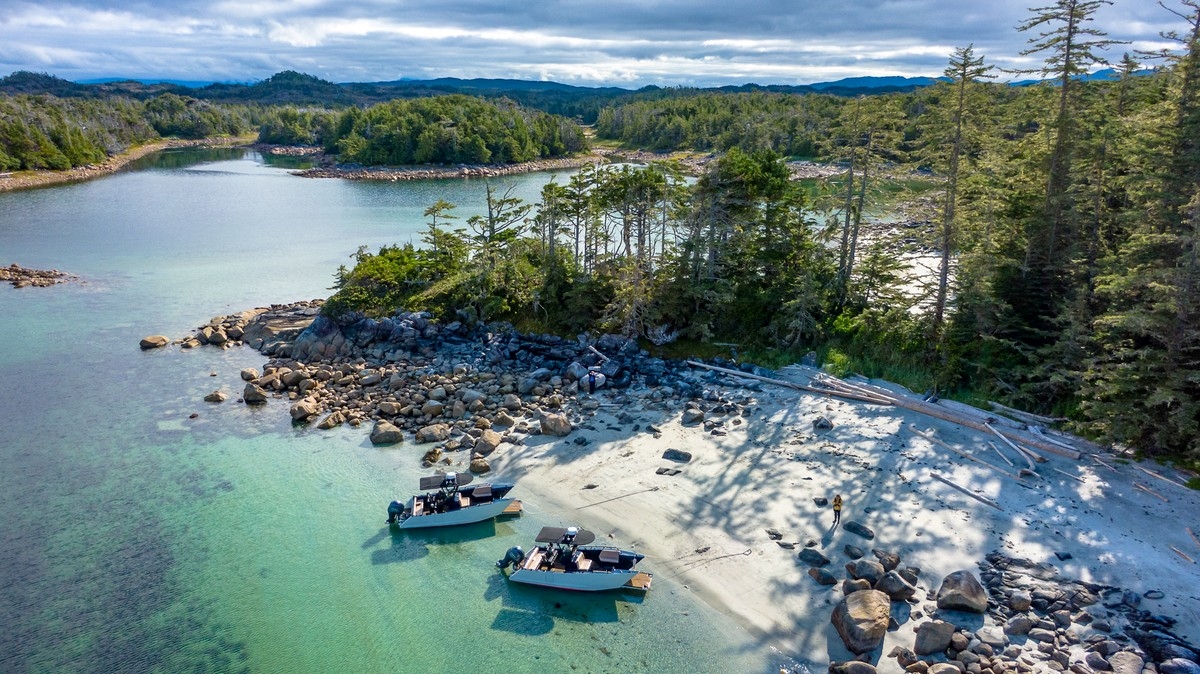
Whales and Wild Isles of the Great Bear Rainforest
View ItineraryEmbark on a summer expedition across one of the richest coastal ecosystems in the world.
-
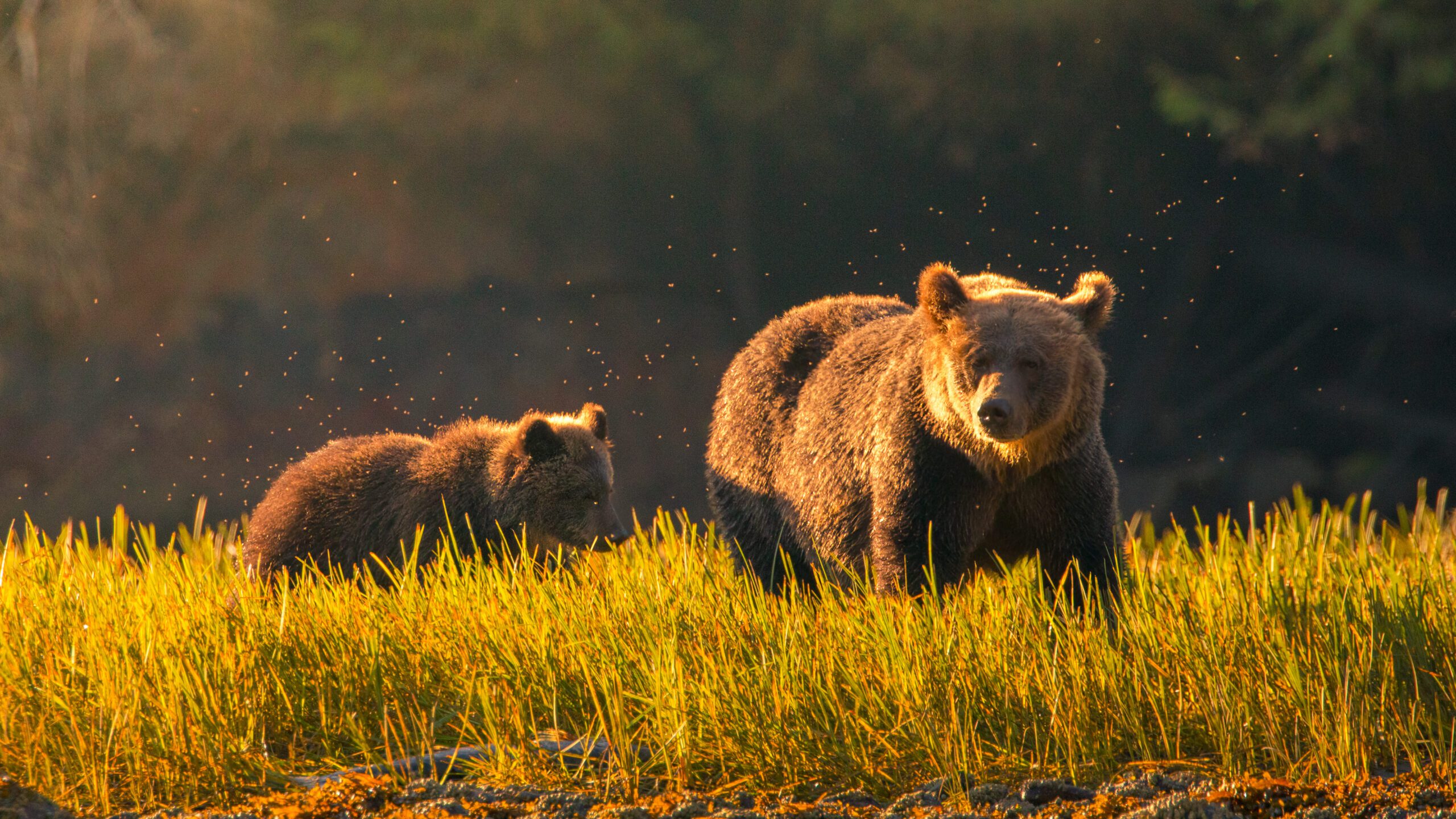
Great Bear Rainforest
View ItineraryFollow magnificent runs of wild salmon to the home of black, grizzly, and the elusive white-furred spirit bear.
-
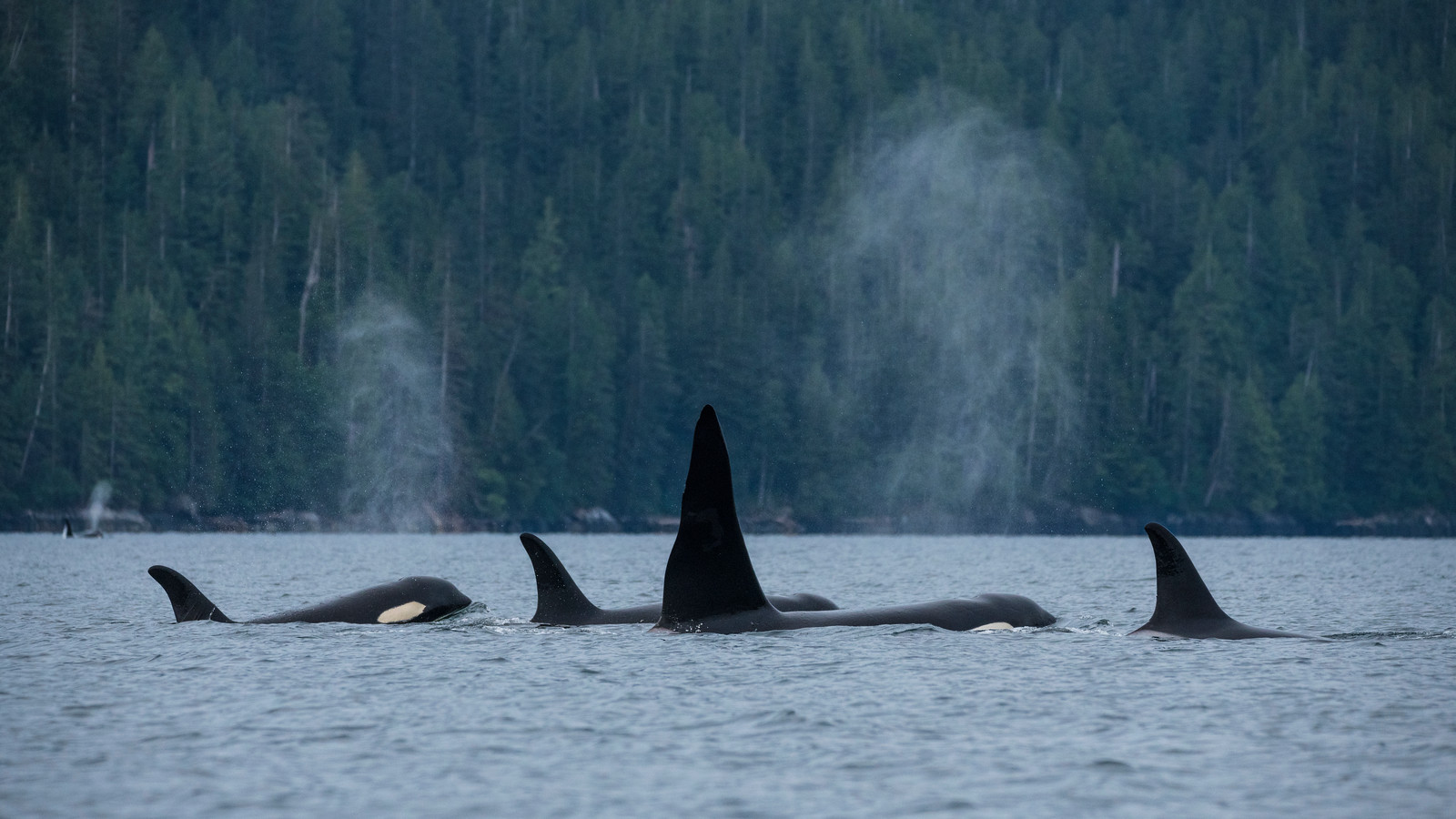
Whales and Totems
View ItineraryExplore intricate passageways between idyllic islands in the Broughton Archipelago, one of the best places on earth to see whales.
-
-
Vancouver Island’s Wild Side
View ItineraryCruise Vancouver Island’s rugged Northwest, where time is measured by the rise and fall of the tide.
-
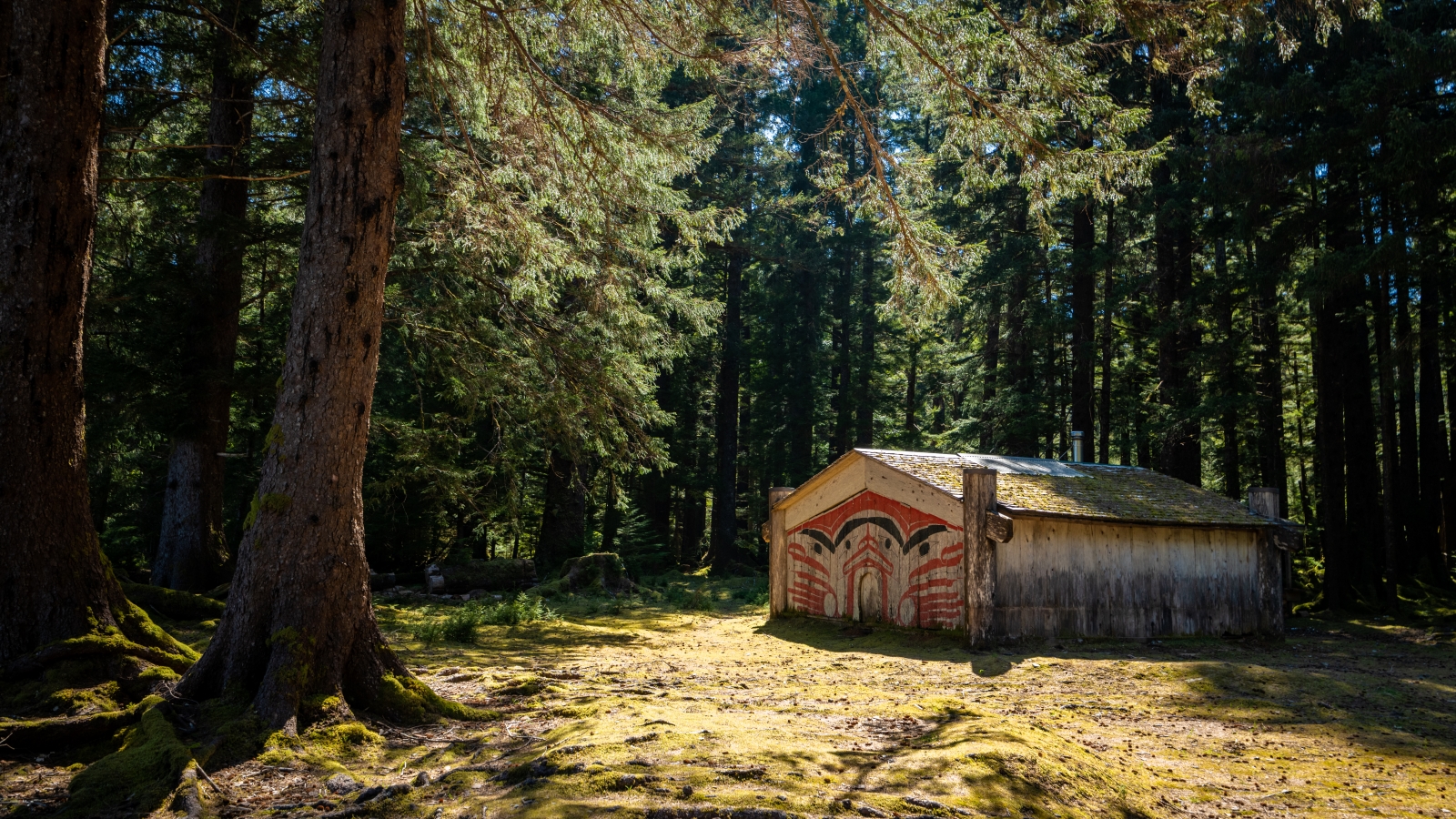
Haida Gwaii
View ItineraryDiscover the rich indigenous culture and natural wonder of Haida Gwaii. 8 to 9 days from the northern town of Masset to the southern reaches of Gwaii Haanas National Park Reserve
-
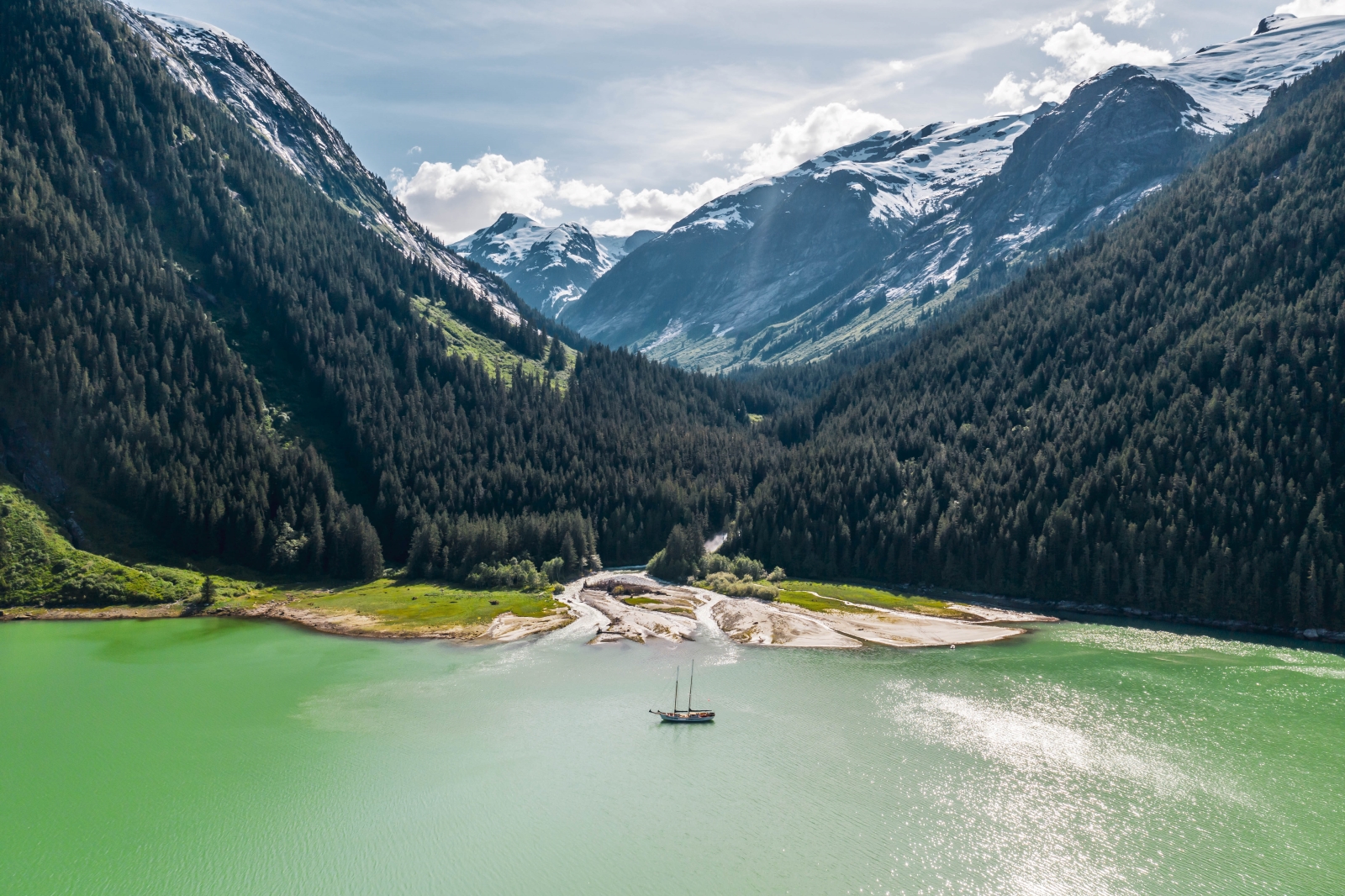
Great Bear Rainforest and Kitlope
View ItineraryBird migrations, newly awakened grizzly and black bears grazing on green sedges—experience it all on a small ship adventure.
-
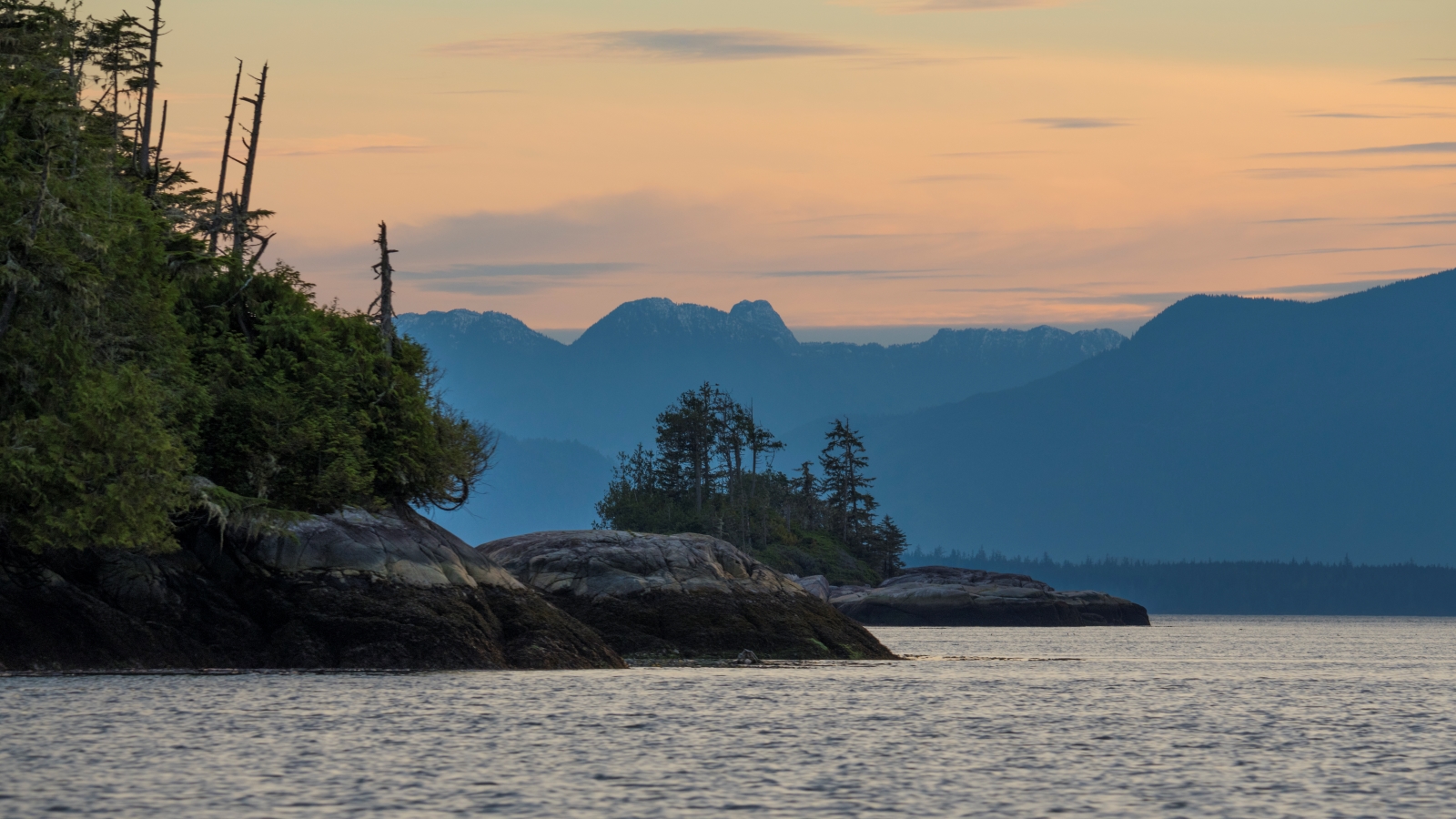
Vancouver Island’s Inside Passage
View ItinerarySpend a week cruising up Vancouver Island’s diverse coast with a world-class crew.
Seasonal Whale Highlights

Photo: Jeff Reynolds
Bigg’s orcas can be seen along the BC coast in any season, but resident orcas, which rely on salmon, are more commonly spotted in late summer and early fall. Your chances of seeing either depend on the season, location, and—most of all—the movement of prey.
| Season | Whales You Might See | Best Spots |
| Spring (April–June) | Gray whales, transient orcas, early humpbacks | Broughton Archipelago, Desolation Sound, Gulf Islands, Vancouver Island. |
| Summer (July–August) | Humpbacks, resident/transient orcas, gray whales | Vancouver Island, Great Bear Rainforest, Broughton Archipelago. |
| Fall (September–October) | Humpbacks (bubble-net feeding), orcas, fin whales | Desolation Sound, Gulf Islands, Great Bear Rainforest. |
Final Thoughts
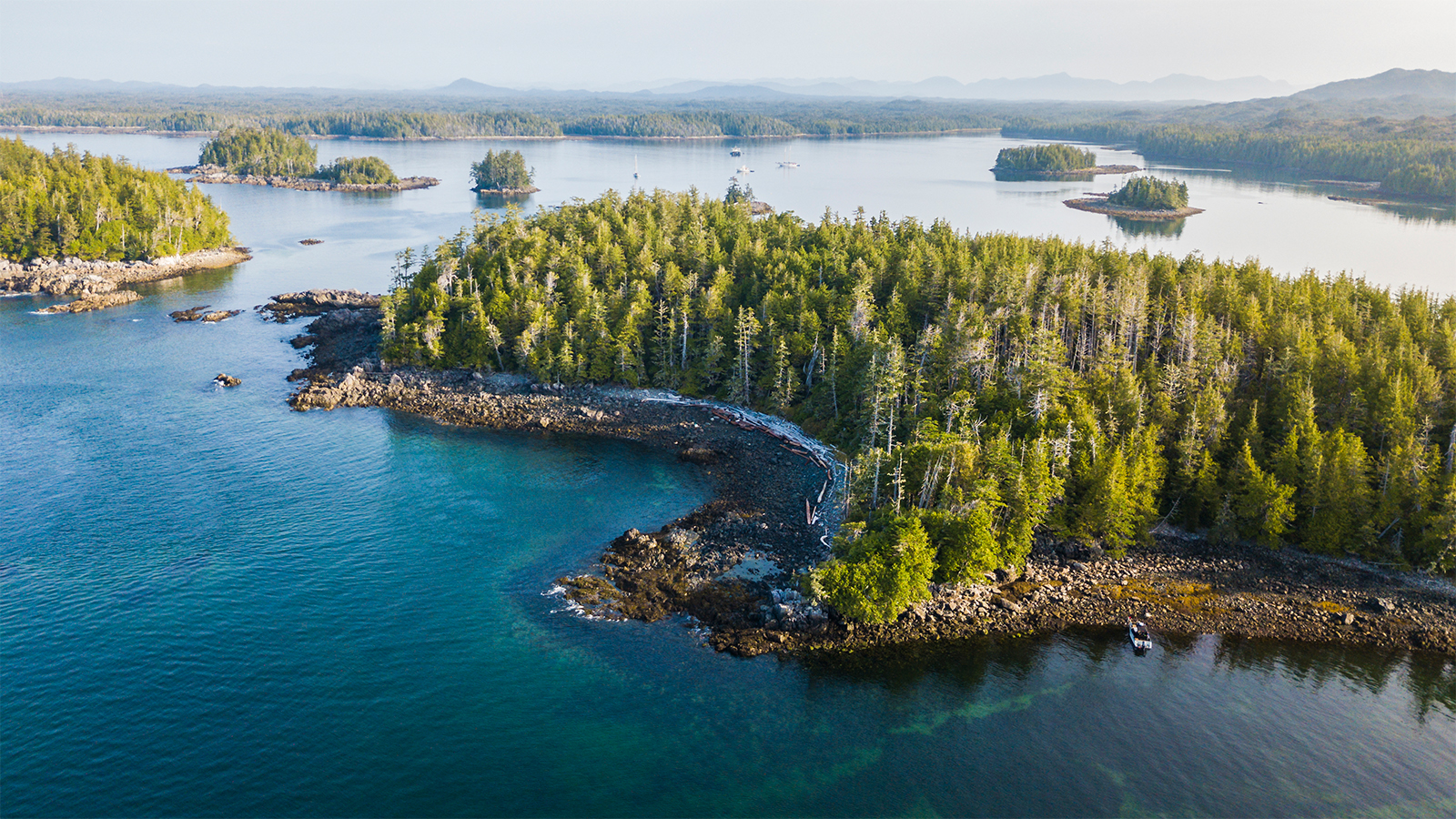
Photo: Simon Ager
Aerial view of the wild coastline in the Great Bear Rainforest – where ancient temperate forests meet turquoise waters, offering a stunning backdrop for remarkable wildlife encounters.
The most meaningful encounters happen not just when we see whales—but when we understand why they’re here. Whale watching on the BC coast is a chance to witness not just individuals, but a living system: currents that carry krill, salmon that nourish both whales and forests, and the delicate seasonal timing that brings it all together.
Whether you have a single afternoon or several days at sea, you’re not just a spectator—you’re a guest in a coastal world shaped by the movements of whales.
Learn More Ask us a Question
